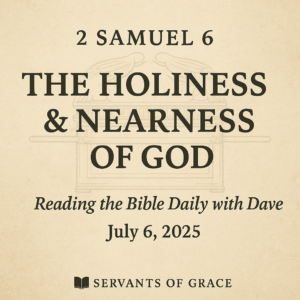⏱️ Estimated Reading Time: 19 min read
Recently, my son and I went on a campus tour of a local university. In many ways, the university is a wonderful place where young people can explore, experiment, and grow intellectually, but all too often universities can also be the place where young people lose their faith. We live in an age of doubt. The French philosopher René Descartes coined the motto of the Enlightenment when he said, “I doubt—therefore I think; I think, therefore I am.”
“I doubt…therefore I am.” In other words, doubt is at the core of our human existence. Ever since, it’s been fashionable to question traditional beliefs and to embrace a critical, even skeptical, mindset toward everything in life—including God. In fact, as we’ll see, doubt is a lot older than Descartes and the Enlightenment.
One of the most important historical questions related to Christianity is how a tiny offshoot of Judaism went on to change the world. One of the most outspoken detractors of Jesus’ deity and the truthfulness of Christianity, UNC religion professor, Bart Ehrman, writes, “But then something else happened. Some of [Jesus’ followers] began to say that God had intervened and brought [Jesus] back from the dead. The story caught on, and some (or all—we don’t know) of his closest followers came to think that in fact he had been raised” (Did Jesus Exist, 233). So, did the early Christians invent the resurrection of Jesus? Much of what Ehrman writes goes actually beyond mere doubt; it’s downright skepticism, the kind of skepticism that starts out with a negative assumption and isn’t genuinely open to any evidence to prove otherwise.
The Bible teaches that salvation is by grace through faith (Sola Gratia, Sola Fide). What that means is that God took the initiative to save us, in and through Jesus Christ, and there is nothing we must or can do to make our own salvation possible. But it also means that the way in which we appropriate God’s grace so that it becomes effective in our lives is by active trust in Him on a daily basis. We trust in Him alone for our salvation, but we also trust in Him moment by moment, as we go through our lives and face various challenges and opportunities. For this reason, it’s very important that we learn to believe rather than doubt God in our daily lives.
You may have heard about the “Hall of Faith” in Hebrews 11 that parades Old Testament examples of faith. You may not have heard about the ignominious “Hall of Doubt” that is chronicled in the Bible—individuals who doubted rather than trusted God. Most notably, you have may heard of “doubting Thomas”, as he has been called over the centuries. His encounter with the risen Christ serves as an important case in point as we ponder the question of faith vs. doubt. Before we look at “doubting Thomas”, however, let’s take a brief survey of doubt in the Bible.
A Brief Biblical History of Doubt
Throughout biblical history, there have been those who doubted. First was Satan who asked, “Did God really say, ‘You must not eat from any tree in the garden’?” when God had simply said Adam and Eve shouldn’t eat from one of those trees (Genesis 3:1). The devil cast doubt on God’s word and made Eve insecure and confused. She subsequently fell into sin, all because she didn’t trust God and His goodness, but doubted His Word.
Later Sarah, the wife of Abraham, laughed when God told her she would have a son in her old age. She didn’t think it was possible, even though God told her, and she laughed. Then she was embarrassed about having laughed and denied it, but God insisted that she’d laughed (Genesis 18:12–15).
Lot’s wife doubted and looked back when she and her husband fled Sodom and Gomorrah. The terrible judgment was that she turned into a pillar of salt (Genesis 19:26). Rather than trust God and his deliverance, Lot’s wife felt a strong pull toward her old life. She was torn between following God and living life in her own way.
When Job was afflicted and struggling to trust God in the midst of his terrible trials, his wife came to him and taunted him and said, “Are you still holding on to your integrity? Curse God and die!” (Job 2:9). Job’s response was: “You are talking like a foolish woman. Shall we accept good from God, and not trouble?” (v. 10).
Later on, the Israelites in the wilderness wanted to go back to Egypt and accused Moses of bringing them into the desert to die. They said, “Is it because there were no graves in Egypt that you brought us to the desert to die? What have you done to us by bringing us out of Egypt? Didn’t we say to you in Egypt, ‘Leave us alone; let us serve the Egyptians’? It would have been better for us to serve the Egyptians than to die in the desert!” (Exodus 14:11–12). Actually, this is more than just doubt; this is outright unbelief.
Fast-forwarding to the New Testament—Nathaniel’s friend, Philip, told him that they had found the one about whom the Law and the Prophets had written, Jesus of Nazareth. But Nathanael asked, “Nazareth! Can anything good come from there?” (John 1:46). He was skeptical. He doubted the truthfulness of Philip’s words. Yet when he met Jesus, he said, “Rabbi, you are the Son of God; you are the King of Israel” (v. 49).
The Pharisees kept asking Jesus for signs when He had already performed numerous signs right before their very eyes. After He had cleared the temple, they said, “What sign can you show us to prove your authority to do all this?” (John 2:18). And again, when He had fed the multitudes, they said, “What sign then will you give us that we may see it and believe you? What will you do?” (John 6:30). Did you catch this: “that we may see it and believe” (the wording anticipates Jesus’ words to Thomas later on)? They demanded tangible proof, or else they refused to believe. Now what did Jesus do? He simply told them that He was the Bread of Life, and challenged them to believe. As a result, many left and no longer followed Him, because they were offended.
At some point, even John the Baptist developed doubts about Jesus’ true identity. He sent some of his disciples to Jesus, and they asked Him, “Are you the one who was to come, or should we expect someone else?” (Matthew 11:2). John had been thrown into prison, and he started to doubt that Jesus really was the Messiah. Amazing, isn’t it? His adverse circumstances made even the forerunner of Jesus doubt that He was who He claimed to be. He looked at his circumstances, and his feelings, and he began to doubt. Jesus pointed out the fickle nature of many when He said that they couldn’t make up their minds what they wanted. They criticized the Baptist for not drinking any wine and then didn’t like it when Jesus did (Matthew 11:7–18). Some people you can’t please, no matter what you do.
After the resurrection, when Jesus gave His disciples the “Great Commission”, the Bible says, “When they saw him, they worshiped him; but some doubted” (Matthew 28:17). Even when the risen Jesus stood there right in front of them, some of His disciples doubted! It obviously was not a problem of insufficient evidence, because what more evidence can you have than the resurrected Jesus standing right in front of you? The problem was in their hearts; some of them doubted.
In the Book of Acts, we read that the philosophers in Athens sneered at Paul’s message and told him they wanted to hear him again another day (Acts 17:33). Only a few believed. As Paul writes in 1st Corinthians, the Greeks craved wisdom, but in their quest for human wisdom, they missed the wisdom of God—Jesus Christ, and Him crucified for sinners like you and me.
In Paul’s last letter, we hear of Demas, one of Paul’s associates, who deserted him because he “loved this world” (2nd Timothy 4:10). We don’t know the exact circumstances, but it seems that Demas took his eyes off the crucified Christ and started to make his decisions based on what was comfortable, cozy, and convenient. 1st John 2:15 tells us not to love the world or the things in the world; Demas “loved this world”. Like Eve, he succumbed to the pride of life, the lust of the eyes, and the lust of the flesh. He forgot Jesus’ words, “What good will it be for a man if he gains the whole world, yet forfeits his soul?” (Matthew 16:26).
In James 1:5-8 we read, “If any of you lacks wisdom, let him ask God, who gives generously to all without reproach, and it will be given him. But let him ask in faith, with no doubting, for the one who doubts is like a wave of the sea that is driven and tossed by the wind. For that person must not suppose that he will receive anything from the Lord; he is a double-minded man, unstable in all his ways.”
And the author of Hebrews writes (at the beginning of his “faith” chapter), “Now faith is the assurance of things hoped for, the conviction of things not seen…And without faith it is impossible to please him, for whoever would draw near to God must believe that he exists and that he rewards those who seek him” (Hebrews 11:1).
So, we see that doubting God’s word and skepticism have a very long pedigree, as it were, in the Bible and in human life—all the way from Satan to Eve, Sarah, Lot’s wife, Job’s wife, the Israelites in the wilderness, Nathanael, the Pharisees, even John the Baptist, some of Jesus’ disciples, and Demas; and the list is far from complete.
Doubting Thomas
Having surveyed the history of doubt in the Bible, let’s now look at the specific case of Thomas. In John 20:24–29, we’ll discover two characteristics of the person who doubts. John 20:24 tells us that Thomas was not with the disciples when Jesus first appeared to them (cf. 20:19–23). We don’t know the reason why Thomas was not with the disciples that first night; it may well have been accidental. In any case, Thomas was not commissioned by the risen Lord along with the other ten apostles when Jesus said, “As the Father sent me, I am sending you. Receive the Holy Spirit” (John 20:21–22). So, we see that seeing the risen Jesus and believing in Him is foundational to mission, to being commissioned by Him and sent out to witness to Him in the unbelieving world around us.
In God’s providence, Thomas thus becomes the focus of Jesus’ second resurrection appearance to His disciples. Now, Thomas is no stranger to the readers of the Gospel. He makes an appearance earlier in the Gospel when Jesus is about to go to raise Lazarus from the dead in chapter 11. In verse 16, Thomas says to the rest of the disciples, “Let us also go, that we may die with him.” Not everyone agrees on how to interpret this statement. Some say this was an act of raw courage, and Thomas was prepared to die a martyr’s death. Others believe Thomas displayed sarcasm and a kind of gallows’ humor. If so, Thomas told his fellow disciples that, very likely in his opinion, if they went with Jesus to raise Lazarus, they would be killed in the process (some even say when Thomas said “die with him” he was referring to Lazarus, not Jesus).
Personally, I lean toward the second option: that Thomas’s remark was cynical. This seems to fit better with the doubt he expresses in our passage and adds up to a character profile of Thomas as a follower of Jesus who found it hard to believe and who was prone to sarcasm, doubt, and unbelief. Peter denied Jesus; Judas betrayed Him; Thomas doubted. So, then, as we’ll see further in the following verse, the first characteristic of a doubting person is this: a person who doubts demands tangible evidence rather than being willing to trust God and his Word even without tangible proof.
The Demand for Proof
In verse 25 of John 20, Thomas famously responds, “Unless I see the nail marks in his hands and put my finger where the nails were, and put my hand into his side, I will not believe.” Seeing is believing, the saying goes, so the other disciples believed because they had seen the resurrected Jesus. But Thomas had not been with them. As a result, he was unwilling to take their word for it and demanded special, personal, tangible proof that the crucified Jesus was still alive (or, actually, alive again). How should we evaluate Thomas’s attitude?
Thomas was a realist, a rational thinker, and he wanted to base his faith on actual hard evidence, not the testimony of others. He refused to take a leap of faith. He wanted to go by reason, not revelation; by seeing, not believing; by sight, not faith. Now, as you and I both realize, whether or not Jesus actually rose from the dead is of absolutely critical importance for the Christian faith. In 1st Corinthians 15, Paul says that if Jesus didn’t rise from the dead, our faith is in vain, and we’re in worse shape than unbelievers.
So, on one level, Thomas’s demand is understandable, because it recognizes the critical importance of whether Jesus actually rose from the dead. But at the same time, Thomas’ demand is fatally flawed, because none of us is in a position to demand that God or Jesus must reveal Himself to us in a certain way or at a particular time. God is completely sovereign and can choose to reveal Himself to people at will. But Thomas drew a line in the sand. He was very emphatic that unless he put his finger on the nail marks and in Jesus’ side where the spear had pierced Him, he would never believe (there is a double negative in the original Greek, best translated as “I will never, ever believe” or “there’s no way I’m ever going to believe”).
Incidentally, the same thing is true with many so-called “critical scholars” today. Many of them distinguish between the “Jesus of history”—Jesus as He really was—and the “Christ of faith”, that is, the Jesus that you and I believe in. They say that the actual Jesus (the “historical Jesus”) was, in fact, very different from Jesus as He is depicted in the Bible. Because of their critical spirit—in fact, their skepticism—they drive a wedge between who Jesus really was and the Jesus you and I believe in today—the Jesus revealed in the Bible—and they say that Jesus never rose from the dead. It seems to me that this is not that different from the situation in which Thomas found himself in our passage. He took a skeptical stance toward the resurrected Jesus and demanded tangible proof, or else he was unwilling to believe that Jesus had really risen from the dead. So how did Jesus respond?
What happens next in the narrative shows the graciousness and kindness of Jesus. It was now a week later. Apparently, the disciples were still afraid of the Jewish authorities, because the doors were still locked, like at the previous occasion (John 20:19). Of course, that was no problem for Jesus; it seems He simply went through closed doors with His resurrected body and suddenly appeared in the midst of the disciples. Jesus shows His supernatural knowledge and turns straight to Thomas. He invites him to put his finger onto His hands and into His side and exhorts him to “stop doubting and believe” (John 20:27).
Remarkably, Jesus condescended and revealed Himself to Thomas, even though Thomas’ demand was unreasonable, since it was made in doubt, not faith. In John’s Gospel, the Thomas “episode” becomes a very important object lesson, not only for the original disciples, but also for the readers of the Gospel. They, too, should stop doubting and believe, even though they have not literally seen the risen Jesus. They should trust the apostles’ testimony, as written down in the Gospels. The same is true for you and me today: rather than demand evidence, we should trust God in our daily lives, trust in His goodness, grace, power, and sovereignty; trust and not doubt that He exists and that He will certainly do what is ultimately best for us and what is in keeping with His perfect plan.
Thomas, apparently without taking Jesus up on His offer, casts aside all unbelief and exclaims, “My Lord and my God!” (20:29). The Greek terms are kyrios and theos, both Old Testament names for God. So, Thomas affirms that Jesus is one with Yahweh, the Creator and God, who had entered into covenant with His people—Israel. Thomas’ confession also echoes the way in which the Roman Emperor was addressed in the first century. We have coins designating Emperor Augustus as “the divine son” (divi filius), and many emperors were declared gods by the Roman Senate after their death. In some cases, they even demanded to be worshiped as lord and god during their lifetime. Some were also called “savior” or “deliverer” as the supreme military leaders of Rome.
So, for any original reader of John’s Gospel, the conclusion was obvious: Thomas worshiped Jesus, not the Roman Emperor, as Lord and God. Notice also the Book of Revelation, which was written not long after John’s Gospel, where we see clearly that the Christians at the end of the first century were martyred because they didn’t go along with the emperor cult and refused to worship the Roman Emperor as god.
We heard earlier that Thomas sarcastically told his fellow disciples to go with Jesus so that they would all die with Him. Well, tradition has it that Thomas later went to India as a missionary and subsequently died a martyr’s death, like all the other apostles with the sole exception of the apostle John.
Trusting God’s Promises
In John 20:29, Jesus tells Thomas, “Because you have seen me, you have believed; blessed are those who have not seen and yet have believed.” Here, we see the second characteristic of a doubting person. The person who doubts relies primarily on their five senses rather than looking to God and His promises. This person goes by what he or she sees, hears, can touch, feel, or smell. In other words, such people make their own experience the determining factor of what to believe.
Like Sarah, who judged that old people don’t have babies; or Job’s wife, who concluded that there was no way God would let anyone suffer what her husband had to go through. Or like Yuri Gagarin, the first astronaut in space, a committed atheist, who said he’d been in space and hadn’t seen God there, so that proved God didn’t exist. Or you and I, when we can’t see how God could possibly provide a job for us, or convert a rebellious teenager, or reconcile us to a parent who has rejected us. (Mind you, I’m not denying that there are tough circumstances, such as terminal illnesses, or fatal accidents. Take the (humanly inexplicable) case of a family of four—a father and mother and their two sons—who were killed not long ago in a head-on collision near Louisville, KY. He was a youth pastor and student at Southern Seminary.)
At this, Jesus communicates the lesson He wants Thomas (and us) to learn: faith apart from seeing is better than faith based on seeing. I mentioned the common saying “seeing is believing” earlier. Here Jesus is saying, “No, there’s an even better way.” You could paraphrase it as follows: “Believing is better than seeing.” After all, if you have all the tangible evidence, then you no longer need faith. But God wants us to trust Him and to have faith even when we don’t see how He can work out a given situation, simply because He is God.
Conclusion
Are you a “doubting Thomas” today, or do you take God at His word? We may not have all the evidence we would like, but we have all the evidence we need. In Jesus Christ, God has made a way for us to come to Him and to be reconciled to Him. As John 3:16 says, “God so loved the world that whoever believes in him will not perish but have everlasting life.”
God has made a way—will you and I walk in it? Will we follow His direction? If so, we will be students of His Word. We will abide by His moral directives. We will strive for holiness, and purity, and seek to preserve a clear conscience. We will seek to love others, even those who are different from us. We will be willing to go where He sends us and do what He asks us to do. We will say, “Lord, not my will, but Yours be done.” And with Thomas, we will fall down before Jesus in worship and confess, “My Lord and my God!” No more questions asked, no more evidence needed—it will be enough for us to know that God is God, and we will yield our lives to Him in worship and unquestioning, unconditional obedience. And in this way, we will receive Jesus’ blessing, “Blessed are those who have not seen and yet have believed.”
Andreas J. Köstenberger (PhD, Trinity Evangelical Divinity School) is the senior research professor of New Testament and biblical theology at Southeastern Baptist Theological Seminary in Wake Forest, North Carolina. He is a prolific author, distinguished evangelical scholar, and editor of the Journal of the Evangelical Theological Society. He is the founder of Biblical Foundations, a ministry devoted to restoring the biblical foundations of the home and the church. Köstenberger and his wife have four children.




